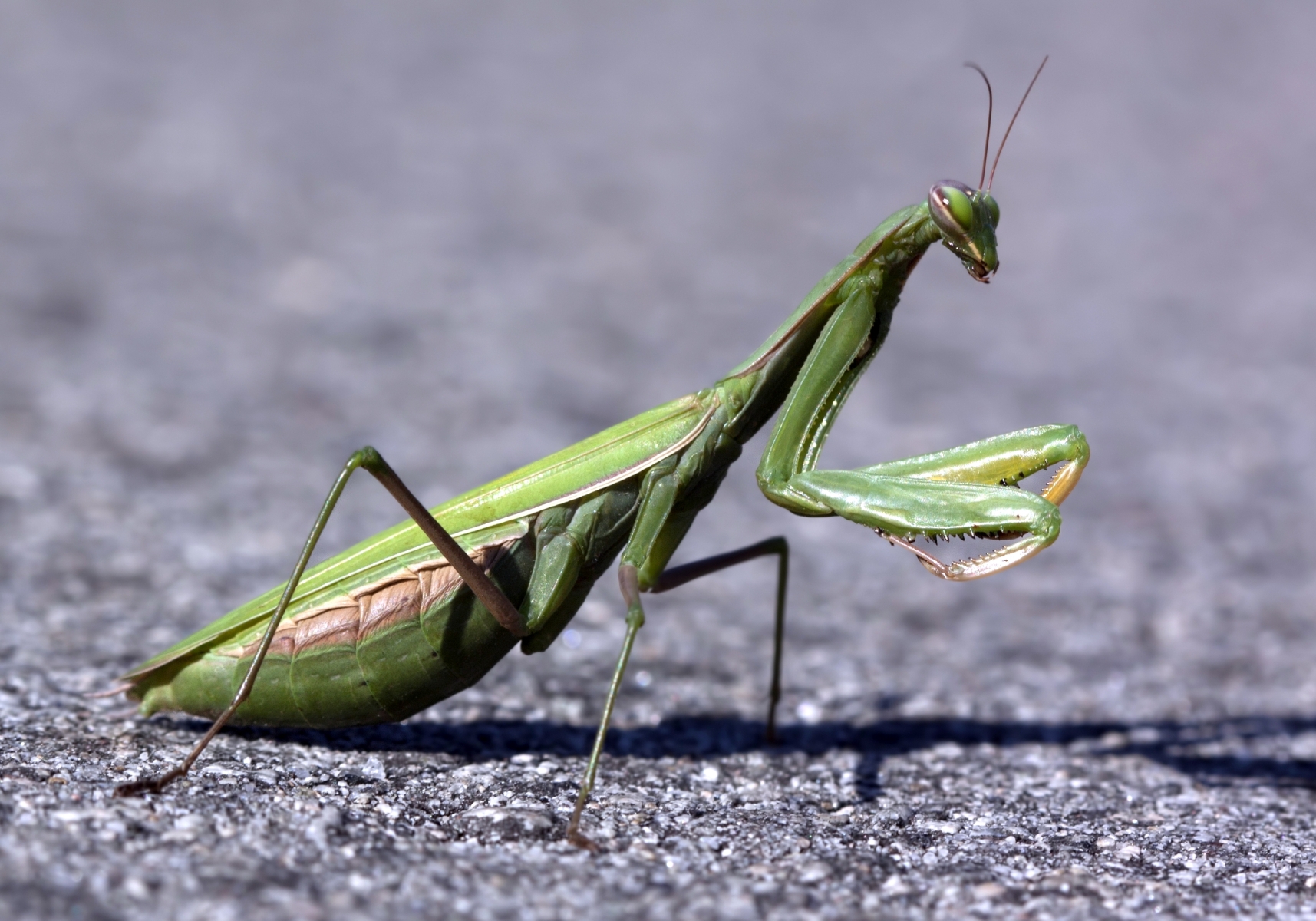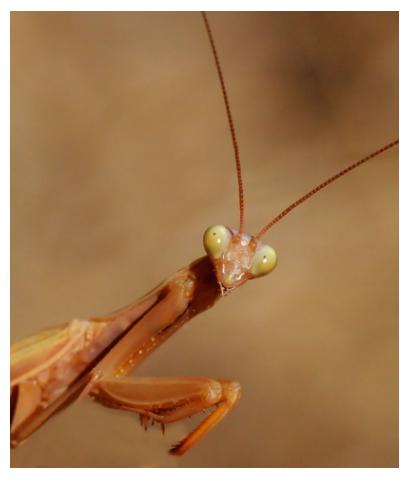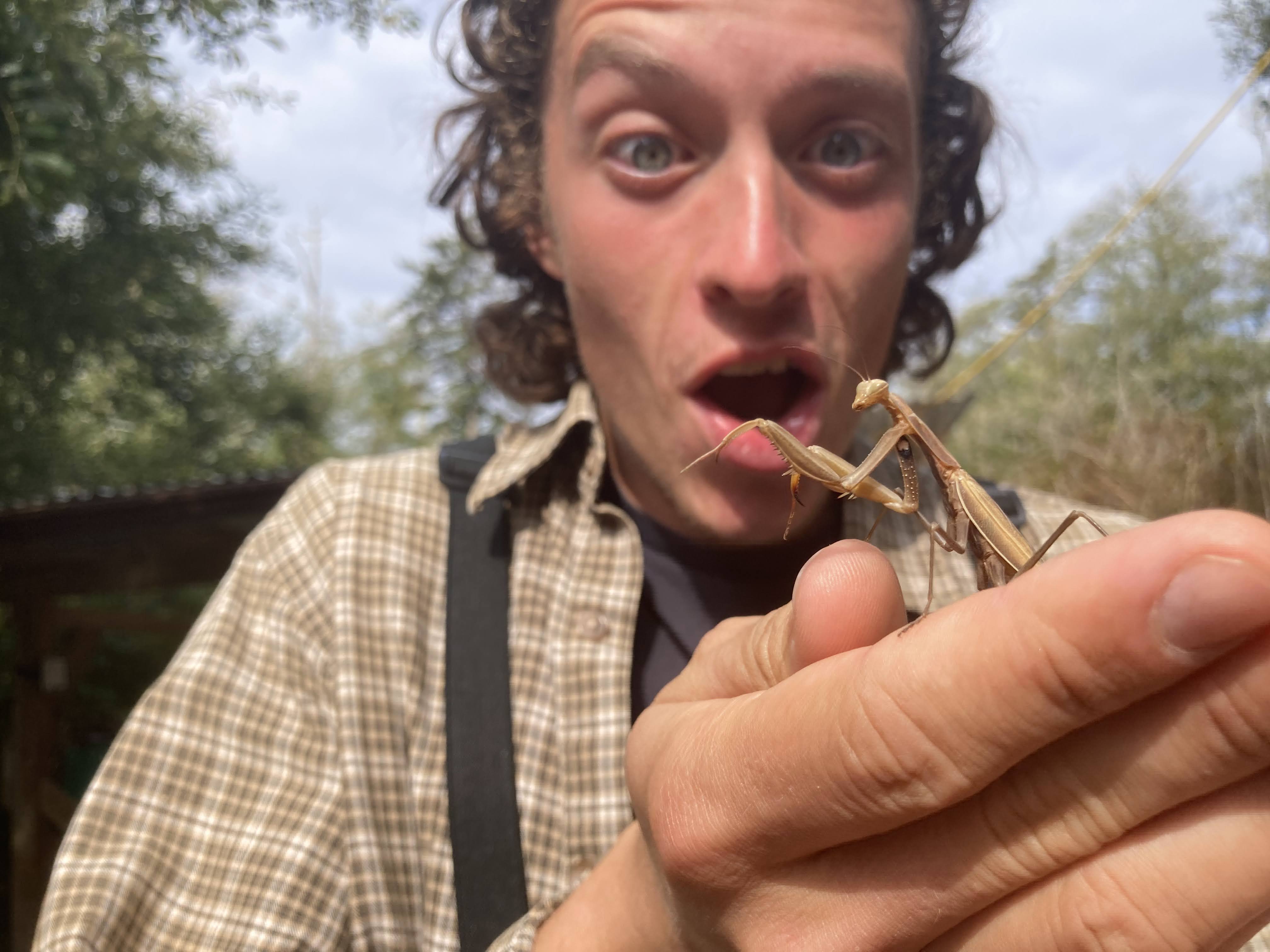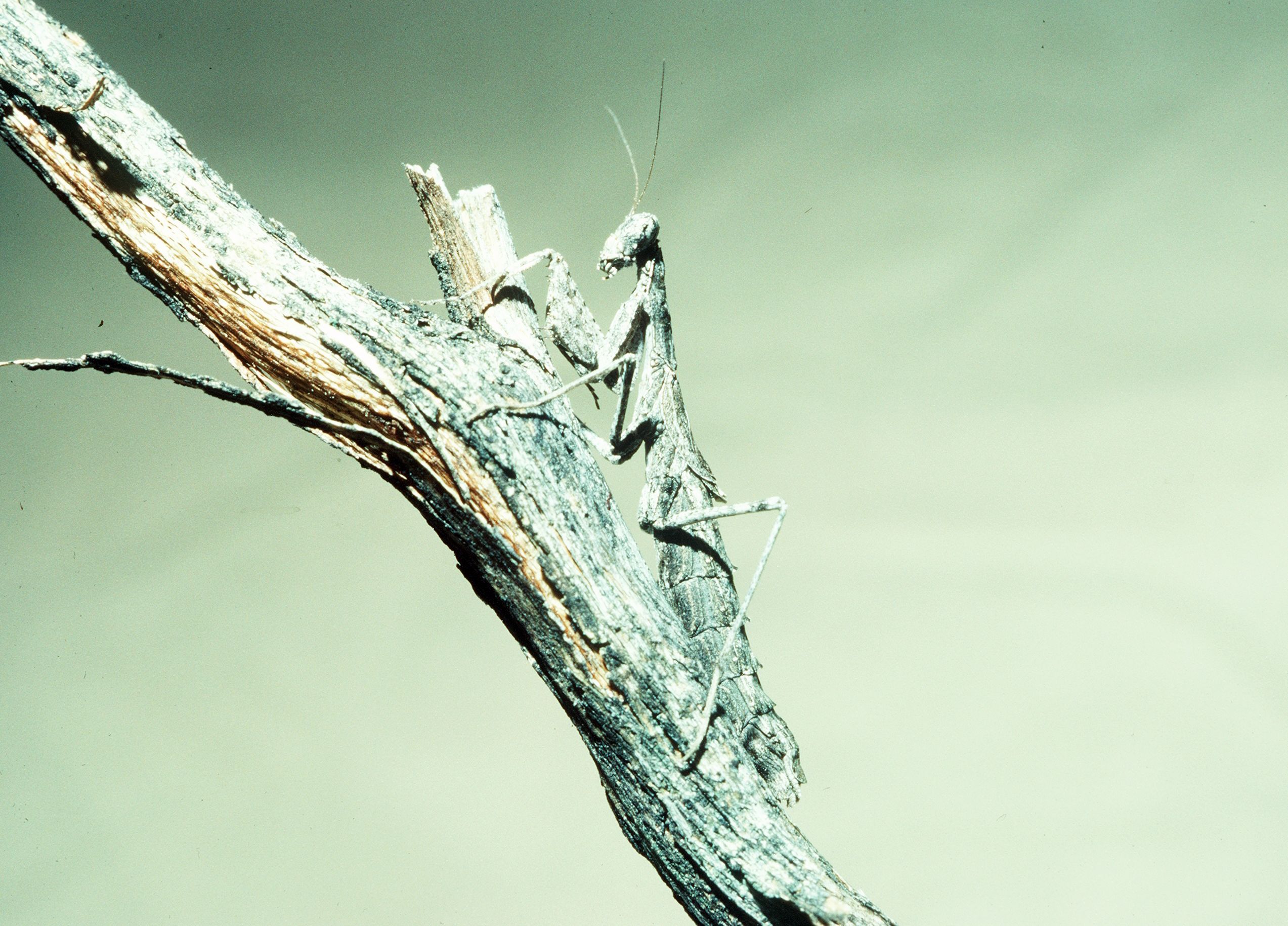
Modernization
Learn more about government’s intention to modernize the museum to protect our historic holdings and provide better access to our collections.

Perhaps we’re curious about mantids because, more than other insects, they look a little human. it’s not hard to personify these strange little creatures, commonly known as praying mantids, with their upright stance, mobile head and staring eyes, and the prominent front legs that look like arms folded in prayer. Though given their patient and precise methods of attack, perhaps a boxing metaphor is more apt.

There are around 2,400 species of mantids worldwide, with most living in the tropics. Their closest insect relatives are cockroaches, and you can think of mantids as predatory roaches. Mantids typically ambush their prey, perching motionless and grabbing passing insects or other small animals with their spiny front legs.

Two species live in British Columbia: the native ground mantis (Litaneutria minor) and the introduced European mantis (Mantis religiosa). Females lay eggs in a foamy mass that hardens into a protective papery egg-case known as an ootheca. These are glued to plant stems, rocks, fences and other places where they wait out the winter. Eggs hatch in the spring and nymphs grow into adults by late summer and early fall. They die before the next winter.
Mantids develop without a pupal stage. When they emerge from the egg, they look like tiny versions of their adult selves and grow as they repeatedly molt or shed their exoskeleton. Wings are fully formed in adulthood, although in some species, especially in females, those wings are only stubs. These short-winged mantids are unable to fly.
In Canada, the ground mantis lives exclusively in dry southern Okanagan Valley grasslands. BC’s ground mantis is grey-brown, up to 35 mm long when fully grown, and the male’s hind wings have a large brown spot. Females have minute wings and cannot fly. As its name suggests, the species spends much of its time on the ground and can run with impressive speed.
The European mantis is larger, growing to about 75 mm long, and is either green or light brown. Both sexes are winged and a black spot, usually with a white centre, at the “armpit” of the front legs, is a distinctive field mark.

Until recently, the thought of seeing a mantid hardly crossed the minds of most BC residents. The ground mantis is rare and the European mantis is uncommon and hard to find, but in the last few years, European mantis sightings have skyrocketed.
iNaturalist, an online social network for scientists and naturalists alike to map and share observations of biodiversity around the world, shows close to 500 photographic records of the European mantis across southern BC between 2007 and 2022, with most sightings later than 2020. While much of this increase is due to the ease of reporting sightings through the introduction of digital photography and the popularity of sites like iNaturalist, there has been real growth in the insect’s population and distribution. Only 55 records were documented before 2005.
The European mantis first appeared in New York in 1899, evidently arriving on nursery stock from Europe, and is now widespread in northeastern North America. It then spread into the western USA and BC. In 1937 and 1938, it was introduced from Ontario to the Okanagan Valley and Kamloops-Shuswap region of BC to control the grasshopper population that was then plaguing the region. By the 1960s, the mantid was found only in the South Okanagan but, by the late 1990s, it was on the move again, this time heading east to the Nelson area and north to Kamloops. During this time, there were no records on the coastal mainland, but on Vancouver Island there were two: Port Alberni in 1991 and Duncan in 1999.

Today, based on iNaturalist observations, these mantids are spread across the southern part of BC, from Vancouver Island east to Invermere and Cranbrook and north to Kamloops and Shuswap Lake. On Vancouver Island, mantid sightings are reported from Victoria north to Parksville.
Some people trying to avoid using chemical pesticides in their gardens or green houses will release mantids to control pests. However, mantids are a poor solution because they do not specialize in pest insects and do not multiply rapidly. They’re opportunistic and kill whatever they can catch, which can be both beneficial and harmful species.

The only mantid commercially available in BC for pest control and the pet trade is the Chinese mantis (Tenodera sinensis). It is larger than the European mantis, reaching a length of 110 mm. It is established in southern Ontario and Quebec and in much of the USA. The Chinese mantis has likely been released in BC but apparently cannot survive in our cooler local climate, but this may change as global temperatures continue to rise.
Although the increase in European mantis numbers probably will not significantly harm native insect populations, it’s a bad idea to release alien, non-native species into the wild as no one can really predict what will happen. Mantids really don’t control pests and, as pets, they have short lives and frequently escape captivity, so help limit the spread by not purchasing them.
Photographs in the order they appear:
1. European mantis, green adult female. Photo: Werner Eigelsreiter
2. European mantis, brown form. Photo: Steve Mlodinow
3. European mantis, showing black and white spot at base of front leg. Photo: Joachim Bertrands
4. Ground mantis, female. Photo: Rob Cannings
5. Ground mantis habitat, Osoyoos Lake, BC. Photo: Rob Cannings